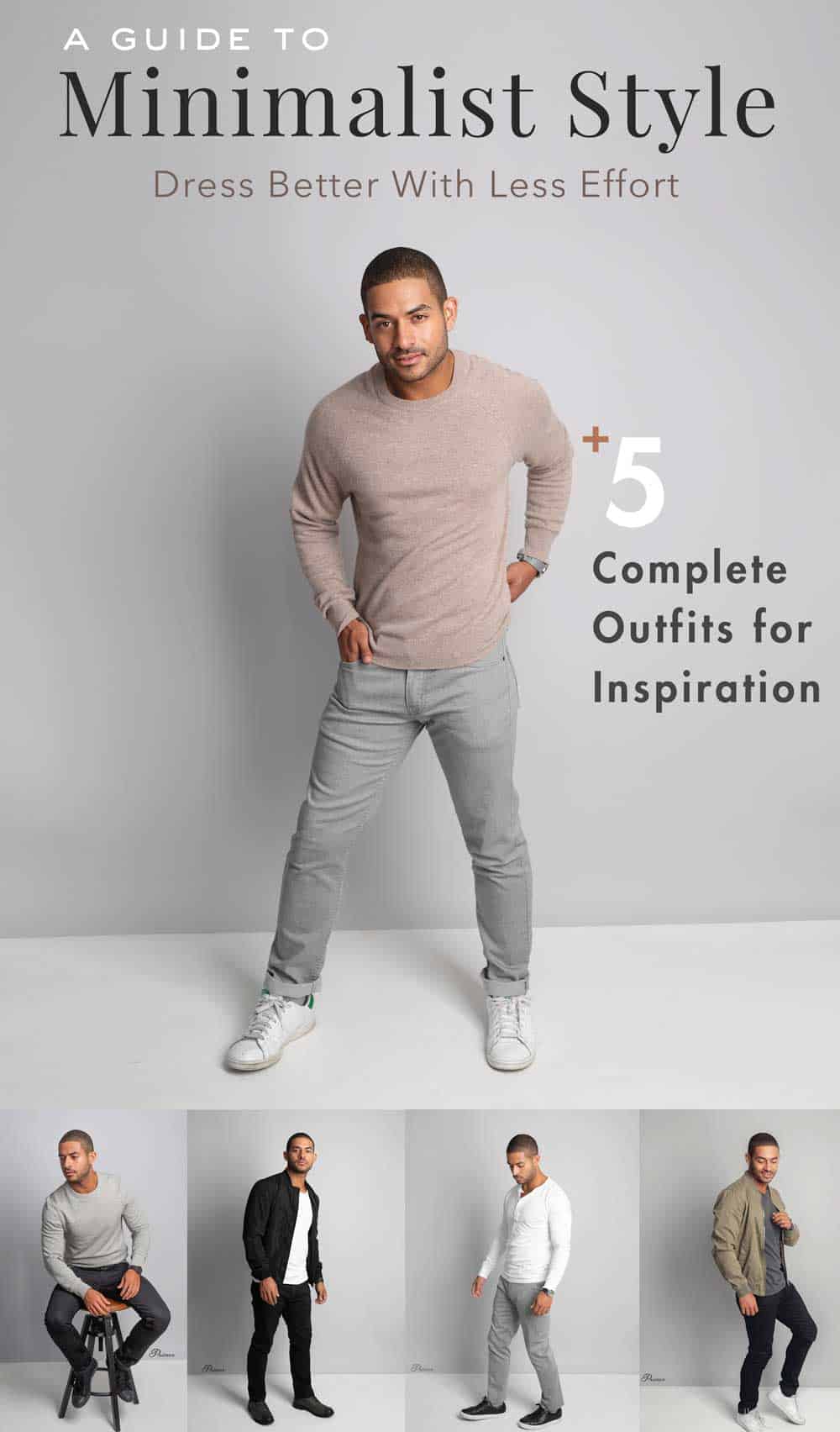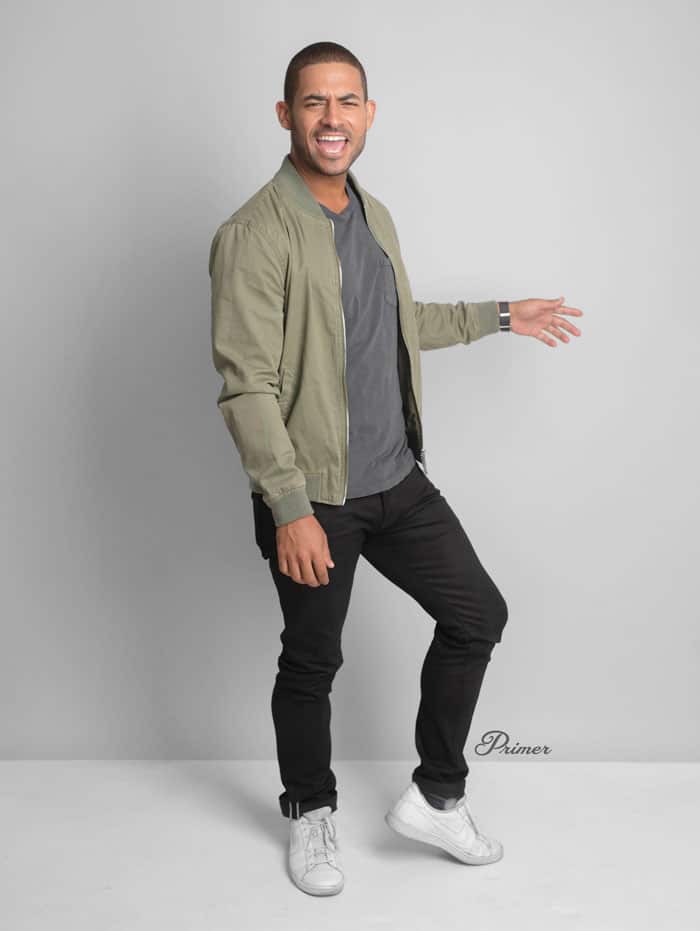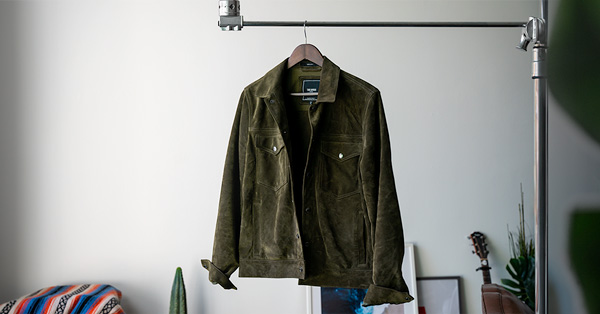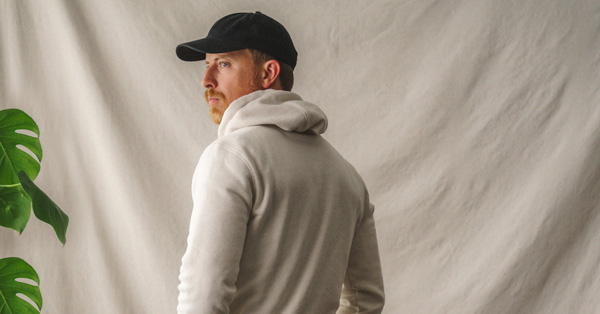What do mixing and matching patterns and colors, dealing with giant logos, and relying on layering all have in common? They can be incredibly frustrating aspects for guys trying to dress better to contend with.
If you've come to Primer more than once, you know we're big fans of a chunky shawl collar sweater layered over a muted plaid shirt paired with a worn pair of rugged brown boots. It's a classic, thoughtful look that works together amazingly.
But what about the guy who wants to always look intentional and well-dressed but can't spare the brain power to figure out if “this pattern goes with this texture over this color”?
The answer is, literally, simple. Embrace a minimalist style.

Bomber Jacket (similar): Amazon, $50 / Pocket t-shirt: Amazon, $12 / Jeans: Levi's 511, $39 / Gray boots (similar): Red Wing, $300 / Watch: Fossil, $83
If your response is, “what’s minimalist style??” stick around – all will be revealed. If you think, “minimalist style is drab/boring” then you have something to learn. If you’re saying, “minimalist style is for hipsters and nerds” give us a chance to change your mind.
Minimalist fashion has the potential to be both very simple and very effective, so we’ve put together a guide to what it is and how to use it.
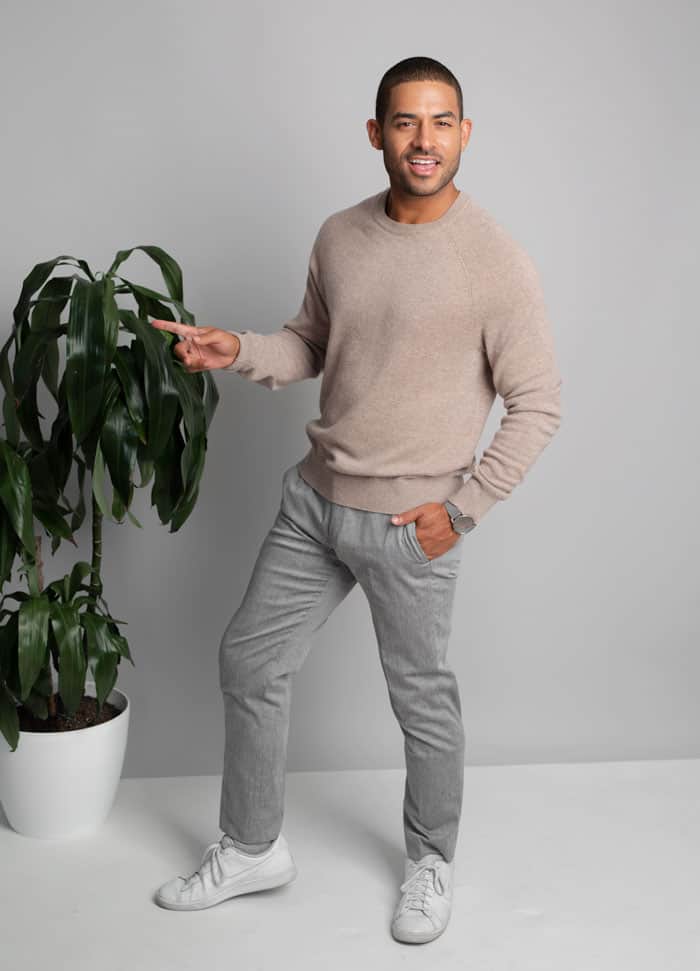
Cashmere sweater (similar): Everlane, $64 more sizes: Amazon, $49 / Watch: MVMT, $140 / Jeans (shown in header for a more casual look): Levi's, $69 / Dress pants (similar to shown here): Uniqlo, $40 / Sneakers (similar): Adidas, $50
What Is Minimalist Style?
“Minimalism” traditionally refers to movements or styles in various forms of art and design. It came about in the 1960s and 70s as a reaction to fine art that had become – in the eyes of minimalists – stale and academic. Unaffected, un-representational, and defined by simple geometric shapes, it was pretty radical at the time.
In the words of architect Ludwig Mies van der Rohe, the motto of minimalist art could be “Less is more.”
When it comes to fashion, “minimalism” can mean different things to different people. For Instagram influencers and self-styled digital nomads, it can mean committing yourself to a bare-bones wardrobe of a half dozen or so carefully chosen pieces – the sartorial equivalent of chucking nearly all your stuff, moving into a tiny house, and sharing a toothbrush with your partner.
To those of us who aren’t steeped in fashion history, it can carry a whiff of pretension. “Minimalist style,” you might say, “makes me think of sipping an unctuous chianti at a Friday art opening.”
For our purposes, it means stripping out superfluous items and creating a simpler, more intentional look based around less.
In practice, minimalist style means:
- Monochromatic or limited color palette
- High quality materials
- Extremely good fit
- Sparse use of patterns
- Carefully selected accents
- Reserved, functional and aesthetic vibe
Now, take a look at that list… isn’t that kinda what we all strive for anyway, minus the no-patterns rule? “Reserved, functional, and aesthetic” could be the second Primer motto, right after “effective, practical, and affordable.”
Why Is Minimalist Style Compelling?
There’s two things that make minimalist style worth consideration. First, it transmits intention. Show up to a party wearing a simple, well-fitting, carefully chosen t-shirt and jeans and it’s making a statement – “I don’t need to layer thing on thing on thing to have great, intentional style.”
Second, stripping your look down to its most excellent essentials means you you can dress well and incredibly simply while using fewer pieces for more occasions. By transmitting intention, minimalist style is actually more dressy, even if it’s just a shirt and pants.
There may be less variation across your minimalist wardrobe, but you’re well dressed more often because it works across venues, events, and social settings.
That, in turn, means you can put less mental bandwidth into your style choices – by having fewer, but more well-chosen items in rotation you always know you’re going to look aces…with less thought required.
Why Do People Criticize Minimalist Style?
The main critique: minimalist style lacks personality, unique features, or anything approaching flash. The cynical argue, “Dressing minimalist is easy: black shirt, black jeans, black shoes.” That, however, is a misreading of minimalism as a style approach.

Raglan crew sweatshirt (similar): Old Navy, $25 / Watch: Timex, $80 Jeans: Levi's, $41 / Sneakers: Converse, $54
6 Tips For Using Minimalist Style To Your Advantage
As with any movement or school of thought that has its own “-ist” (Minimalist, Existentialist, Orthodontist), the key is to break the rules as needed to prevent yourself from being a carbon copy of someone less imaginative and less, well, you.
1. Don’t Wear Four Things When Three Will Do (And So On…)
We’re big fans of layering. Search for “layers” on Primer and you’ll get over 1800 results.
Going minimalist, however, means carefully considering advice to layer up. When putting together an outfit, ask yourself: can I do this more simply than before? What are the essentials that make this look work?
It means reconsidering a style approach that mirrors our broader cultural obsession with business – how can your personal style be less busy, and more effective at presenting you? Practically speaking, it may mean ditching the button up shirt under your sweater or opting for similarly-shaded solids over plaids.
In the words of the ancient knight in Indiana Jones and the Last Crusade, “choose wisely.”
Which brings us to the second tip…
2. Don’t Wear Three Colors When Two Will Do (And So On)
Simple, monochromatic colors. No logos. Avoid patterns. Black, white, grey, navy, olive are enough for most applications.
Playing with color in your look is fun. Minimalist style means limiting yourself to one or two primary colors in an outfit. The effect can be dramatic: button-up and pants can take on a fashion-forward look impossible if you were to jam more colors into your palette.
Take another example: what’s more simple – and iconic – than a white t-shirt and jeans? Especially if the fit is on point, which brings us to…
3. Be Insane About Fit
Whether you’re trimming your closet to 15 essential workhorse pieces, or just endeavoring to dress more simply, minimalist style demands excellent fit.
Rocking a black t-shirt and gray jeans can have you looking emo like you did in high school – unless the cut is spot on. Then it becomes intentional and exciting.
Fit doesn’t mean slim-all-the-way, either. Simply this: proper fit, whatever it is, for your body type.
4. Go Ahead, Use Bright Colors If You Want
Tangerine, plum, saffron, mustard… bringing in bold accent colors for one of your clothing items is totally in bounds. (Especially if the color also happens to be a food.)
On its face, this advice directly contradicts #2 – or does it? Consider this: an accent color top paired with pants, shoes, belt, and watch face that are all the same color is still very minimalist.
Call it ‘loud minimalist.’ Still simple, great fitting – just bolder.

Cotton bomber (similar): Amazon, $39 / T-shirt: Gap, $15 / Selvedge stretch jeans: Gap, $95 / Sneakers (similar): Adidas, $50
5. Accessories Prevent Drabness
Utilize carefully chosen accessories – watch, sunglasses, bracelet, ring – all of which can be cheaper than buying whole new pieces and add color and texture accents that speak louder and more effectively than when lost in a busy outfit.
Take two guys, both of whom are rocking a simple monochromatic look. If one has chosen his accessories with care his look will stand out as truly his own…even if the major pieces are similar.
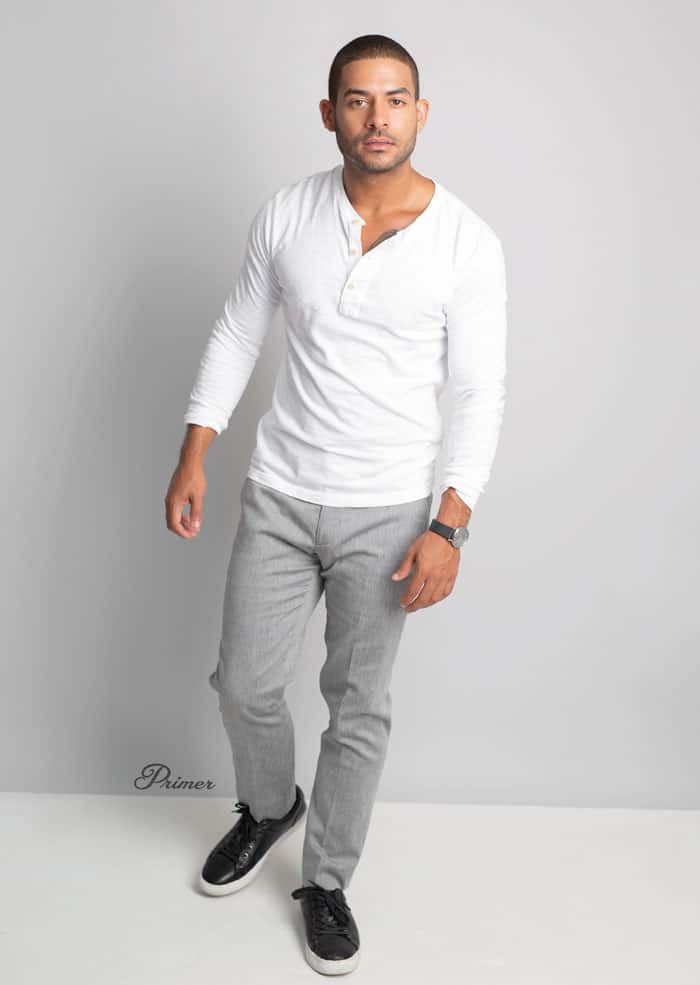
Henley: Amazon, $20 / Watch: Skagen, $121 / Pants (similar): Uniqlo, $40 / Sneakers (similar): Adidas, $47
Which look is your favorite? What does minimalist style mean to you?



